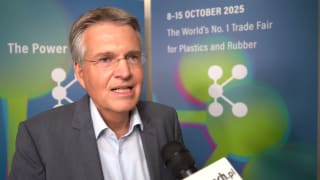Fewer CO2 emissions
A study by the renowned Institute for Energy and Environmental Research in Heidelberg (ifeu) provides further information about the ecobalance: Each metric ton of recycled rubber powder saves some 2.7 metric tons of carbon dioxide, which would otherwise be generated during the incineration process. Accordingly, this material use significantly optimizes the carbon footprint.The application of Vestenamer is a clean affair in many respects: The emissions of volatile and semi-volatile compounds, including hydrocarbons and sulfur compounds, are much lower in road surfaces containing rubber than in conventional, polymer-modified asphalt types.
Furthermore, Evonik's process additive reduces the migration of organic compounds that are washed out by rain and reach the groundwater. As a study conducted by FABES Forschungs-GmbH on behalf of Evonik has documented, the use of Vestenamer reduces the overall groundwater burden.
In the spring of 2013, the Road and Transportation Research Association added rubber-modified bitumen and asphalt types to German regulations for road construction.
Vestenamer was developed in the late 1970s as a processing aid for the rubber industry. Polyoctenamer, which is produced in the Marl Chemical Park, resolves a number of challenges associated with compounding and processing rubber. It is used to this day because of its positive characteristics in the interaction with other rubbers. In addition to the tire market, the product plays a part in the manufacture of rubber items such as hoses, clutch linings, roller coatings or molded parts. Since road transportation authorities have long been looking for an improved and more durable material, the High Performance Polymers Business Line of Evonik began to conduct extensive research in this area 10 years ago. Since then, Vestenamer has gradually become the unifying element of choice in rubber-modified asphalt.
em class="text-muted"> Source: Evonik


